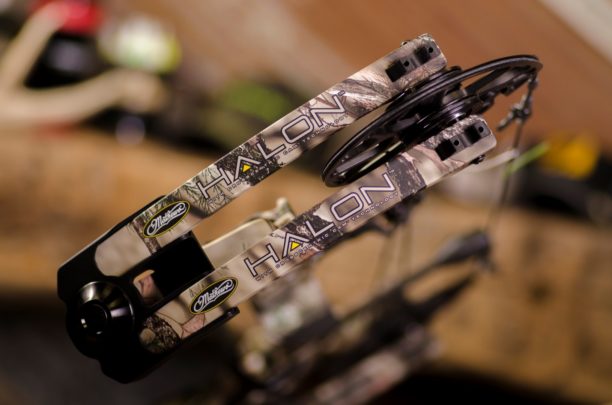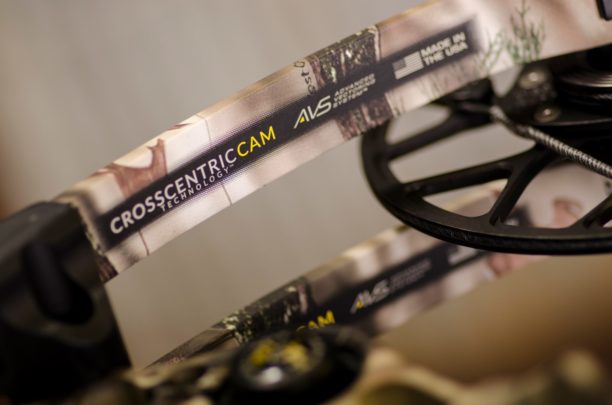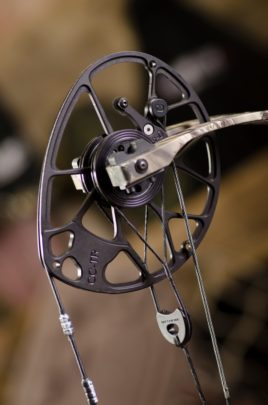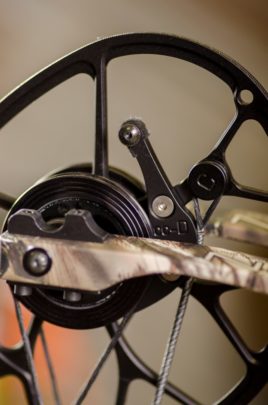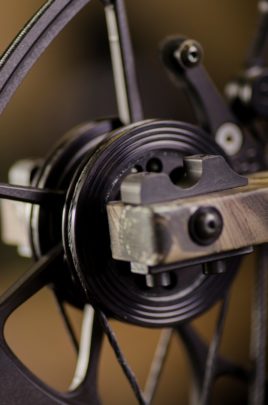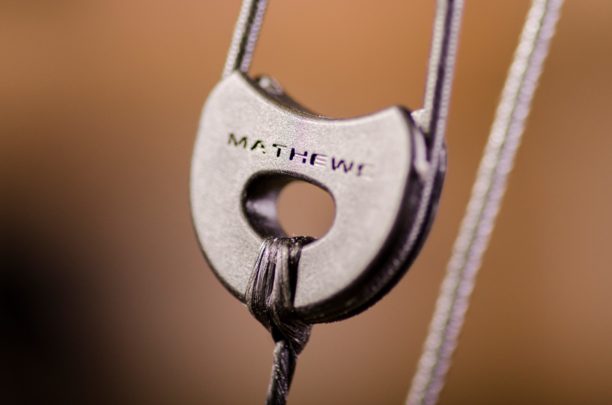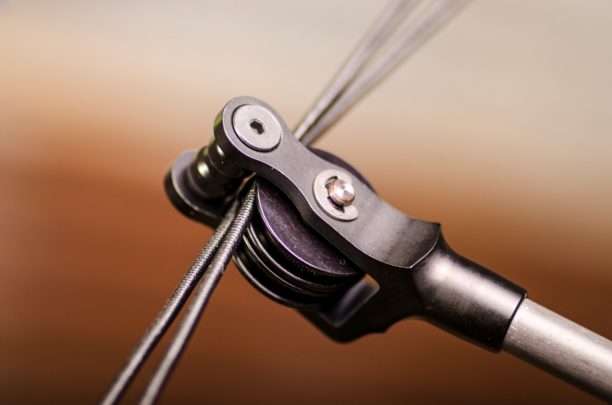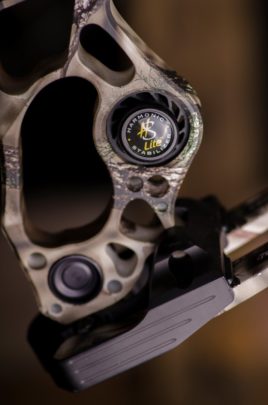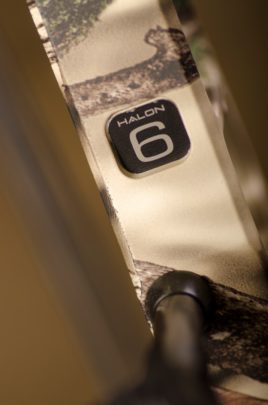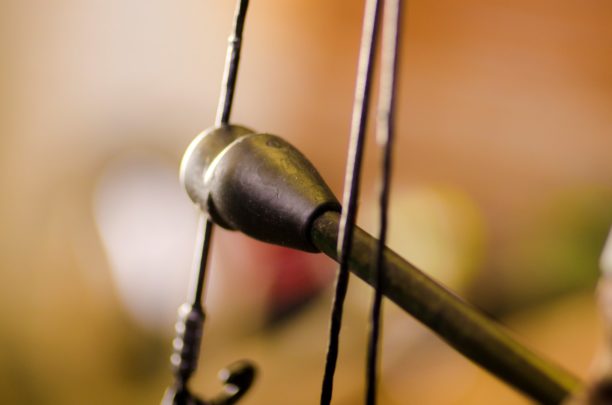LAST UPDATED: June 15th, 2016
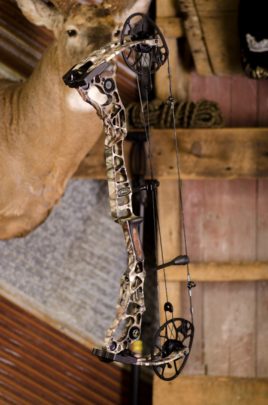
Whether you’re a Mathews fan or not, it’s hard to deny the killer looks of the new Halon. Click for larger image.
When it comes to the archery side of bowhunting there are few things that get me as excited as getting a new bow. There’s just something about setting up a new bow and shooting it for the first time that still excites me after several decades of flinging arrows. So last week when the UPS driver showed up with a package from Sparta, Wisconsin you can bet I took a “break” from working to start my 2016 Halon bow review.
Halon First Impressions
Having seen photos of the bow prior to its delivery my initial impressions were that it looked similar to last year’s Monster Wake. The ultra short, ultra wide limbs, large cams and new riser design make the Halon, in my opinion, one of the most attractive bows Mathews has ever produced. Perhaps the best word I can use to describe this bow is “brawny”.
Now with the brawniness of this bow does comes some added weight. Weighing in at 4.5 pounds this bow is considerably heavier than the featherweight Heli-m that Mathews released just a few short years ago. Although the added weight doesn’t necessarily bother me, and even seems to help steady the bow at full draw, it’s certainly noticeable.
While the Halon is a relatively short 30” from axle to axle thanks to the large cams it measures just over 35” from tip to tip. This helps reduce the severity of the string angle, especially for you long draw shooters out there. The Halon is available in models all the way up to 32” draw length.
Fit & Finish
I don’t think there’s any questioning the fit & finish on a Mathews bow. I’ve personally owned 7 of them now and they’ve all put designed and put together flawlessly. The Halon is no exception. From the wood inlay on the new Flatback grip to the nearly impeccable HD graphics of the Lost XD pattern this bow is built to impress.
If you could judge a bow simply by whether or not it makes you feel like a badass when you’re holding it, the Halon would get an A+.
Dual Bridge Riser Design
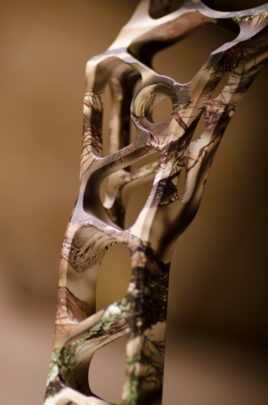
New cutouts along with a dual bridge design make the Halon’s riser not only attractive but extremely strong as well.
Perhaps the most obvious change from Mathews is the departure from the Geogrid riser that we’ve seen the past several years. While I personally liked the way the geometry of the Geogrid riser looked I know it was one of the more polarizing features of recent Mathews bows. It seemed that folks either loved it or hated it and there was no in between. Whether the new design is in response to those haters out there or simply a change to help this bow stand out from it’s predecessors we may never know. The fact of the matter is the long riser with its dual bridges not only looks great but is extremely strong.
The riser itself measures a touch under 27 inches long and is nearly 1.5 inches wide at the bridges. The dual bridge technology first debuted on the TRG series bows which were introduced in 2015, so it’s not entirely new for the Mathews family. However this is the first time we’re seeing it on a hunting bow.
As with all Mathews bows the Halon features a Harmonic Stabilizer on one end and a Harmonic Damper on the other. The placement of these devices has been fine tuned over the years to provide maximum noise and vibration elimination and they certainly prove themselves on the Halon, which produces little of either when shot. Of course the grommets which house the Stabilizer and Damper (technically called elastomers) are interchangeable so you can customize the colors of your bow as well as interchange the placement of the stabilizer and damper to fit your taste.
Crosscentric™ Cam System
Powering the Halon is a new dual cam setup called the “Crosscentric™ Cam System”. This system uses Mathews’ patented AVS technology found on the Monster series bows to produce speeds up to 353 feet per second on the highest performance model.
The cams themselves are very large and one of the first things many people notice about the Halon. However this is done for a purpose. Roughly ½ of each cam is concentric – which means it shares the same center with its opposing cam. As you draw the bow the string track pays out the string at the same distance from the axle through much of the process. What this means for the archer is a very smooth draw with no noticeable humps in the draw cycle.
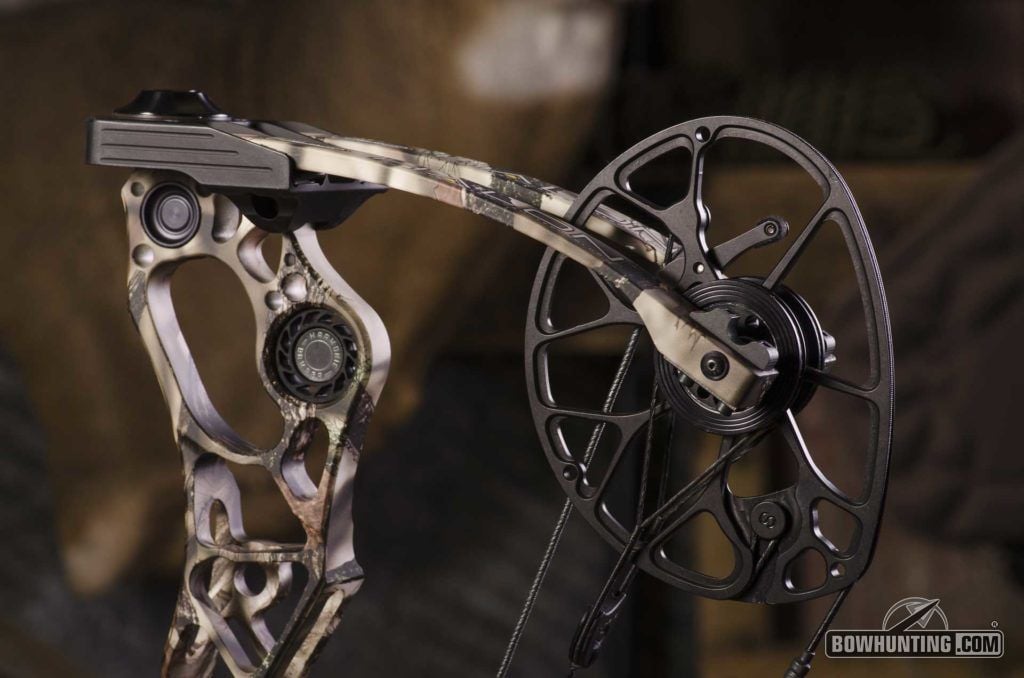
The new Crosscentric Cam System provides loads of power while maintaining a very smooth draw.
Speaking of the draw cycle, it does start off relatively stiff and build up quickly however it soon levels out and creates a very smooth pull back into the valley. The let-off is not abrupt or aggressive at all, which typically causes you to jerk when the cams roll over. Personally speaking I prefer the work to be done early in the draw cycle where the majority of my strength is so I really enjoy the way this bow draws. For the power and speeds it produces it’s a very welcome surprise. My test bow bottomed out at 71.6 pounds and I had no issues drawing it back – even after shooting and hunting with a 65 pound bow for the last 12 months.
Once at full draw the bow holds very steady thanks to the added mass weight. A little bit of creep doesn’t result in a bow that wants to jump out of your hands. This is very nice for us bowhunters who may find ourselves in precarious situations occasionally requiring some extended time at full draw.
3 Models, 3 Speeds
The Halon is available in 3 different models, the 5, 6 and 7, with each model corresponding to the bow’s brace height. With the shortest brace height the Halon 5 produces the most speed hitting up to 353 feet per second. The Halon 6 is IBO rated at 345 feet per second and the more forgiving 7 inch model clocks in at 335 feet per second.
Now when it comes to speed I feel there’s a lot of hunters and archers out there who don’t totally understand how these numbers are achieved, so allow me to take a sidebar to address this. IBO speeds are calculated using a bow set at 70 pounds with a 30 inch draw length and a 350 grain arrow. This standard is used across the board by all bow manufacturers and allows them to publish speeds that are the highest possible to safely achieve with their bow. And while they look great on paper there is virtually no chance that the average bowhunter will see those speeds from his or her bow.
Most bowhunters are shooting bows that are 28” or 29” draw length with an arrow roughly 400-450 grains. With a shorter draw length and heavier arrow than IBO testing if you put your bow through a chronograph don’t be surprised to see speeds considerably slower. This is simply the nature of how IBO tests are conducted versus what happens in the real world. Nobody is out to fool you, so put away the torches and pitchforks already.
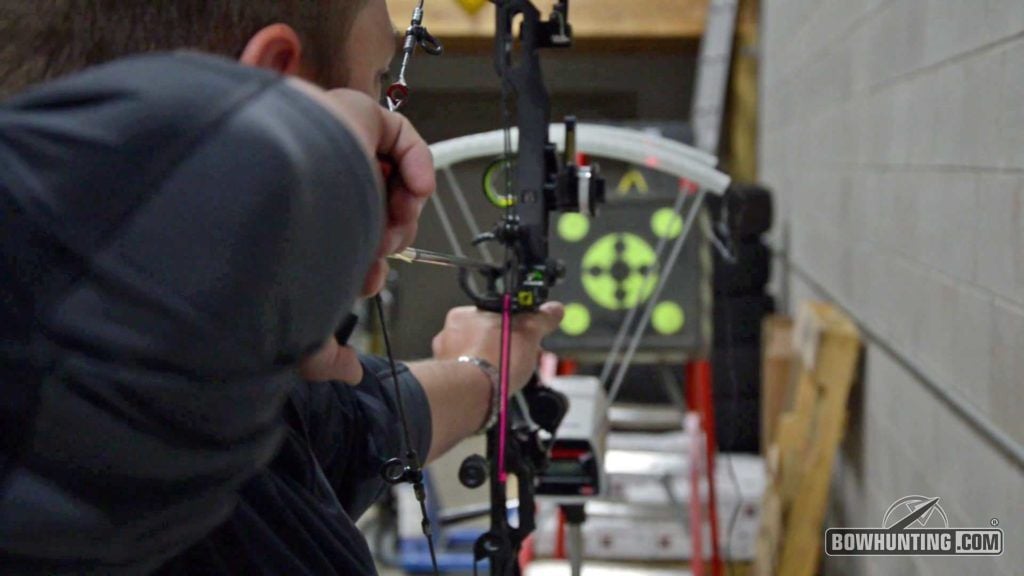
Speed testing the new Halon 6 at the Bowhunting.com headquarters.
I put both of the Halon 6’s we received to the test in our chronograph and here’s what I found.
Bow #1: 29 inches, 71.6 pounds with the limbs bottomed out.
437 grain arrow – 298 fps
492 grain arrow – 283 fps
Bow #2 – 28.5 inches, 66.6 pounds (the bow I will be hunting with)
437 grain arrow – 282 fps
492 grain arrow – 267 fps
I’m positive I could crack well into the 300’s with the 29 inch bow by simply lowering the arrow weight down to closer to 400 grains. Several other testers out there are producing speeds in the 310 fps range with a 410 grain arrow, which is right on part with what I’m seeing. However I prefer a little bit of added weight on my arrows which helps with kinetic energy, momentum and ultimately penetration. Speaking of which the 29” bow is spitting out over 86 ft/lbs of kinetic energy with both arrows and the 28.5” bow tuned down to 66 lbs is just shy of 78 ft/lbs. Both of those setups are more than adequate for hunting virtually any big game animal that roams our planet and should have no problem blowing through even the biggest bodied whitetails.
Both bows were tested with 85% let-off modules along with a Pine Ridge Archery Feather Peep and string loop in addition to the factory installed speed nocks and monkey tails. A simple swap to 75% modules would surely accommodate for a few extra fps out of both setups. Let-off and draw length changes are both done by simply changing a module without the need for a bow press, which is very handy.
New Grip
With the new riser and cam system also comes a new grip for this year. The Flatback grip is constructed almost identically to the Focus grip on last year’s NoCam HTR with a wood inlay on the camo models and a carbon inlay on the Tactical versions. The big change however is in the back of the grip which is now flat rather than having the Focus ridge. I am a big fan of this new grip which not only feels more comfortable but more repeatable as well. I’ve always “liked” my Mathews grips but have never “loved” them until now. Even though this is one of the smallest changes for this year it’s possibly the one I’m most excited about.
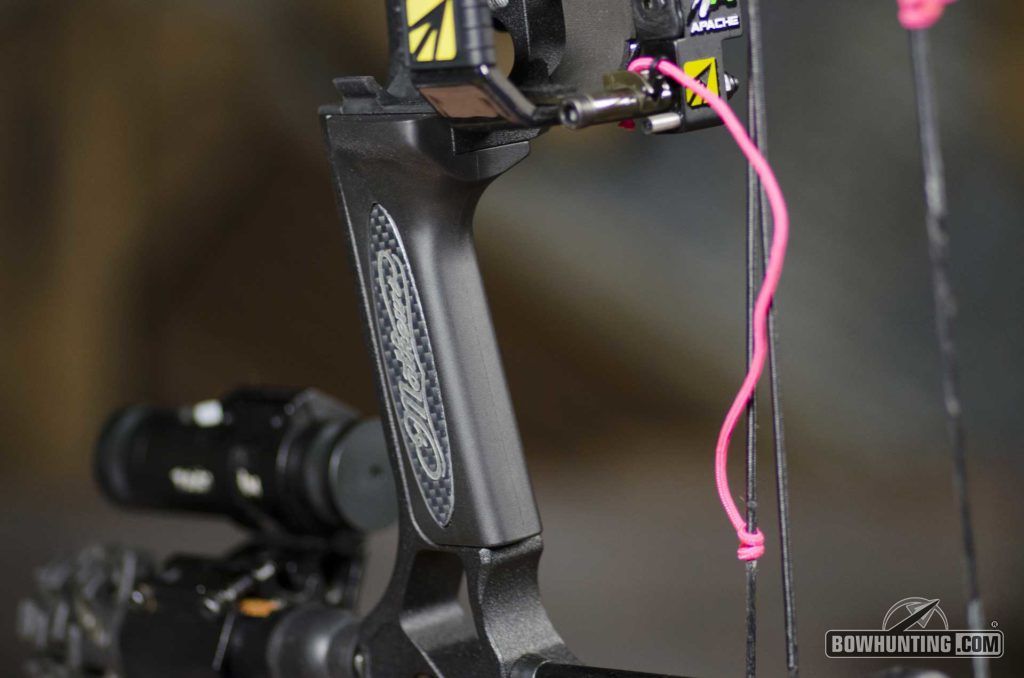
While camo versions feature a wood inlayed grip, Tactical versions come with a sleek carbon fiber inlay. And hey, don’t make fun of my pink dropaway cord! It brings me good luck.
New Finishes
Of course with a new bow comes new finish options! The Halon is available in 5 options which are as follows: Black, Black Tactical, Stone Tactical, Lost OT and the all new Lost XD. As I mentioned earlier the new Lost XD looks great in the high resolution printing with nearly flawless detail. This new camo pattern is a few shades lighter than the original Lost Camo which will help it be more versatile in a variety of conditions.
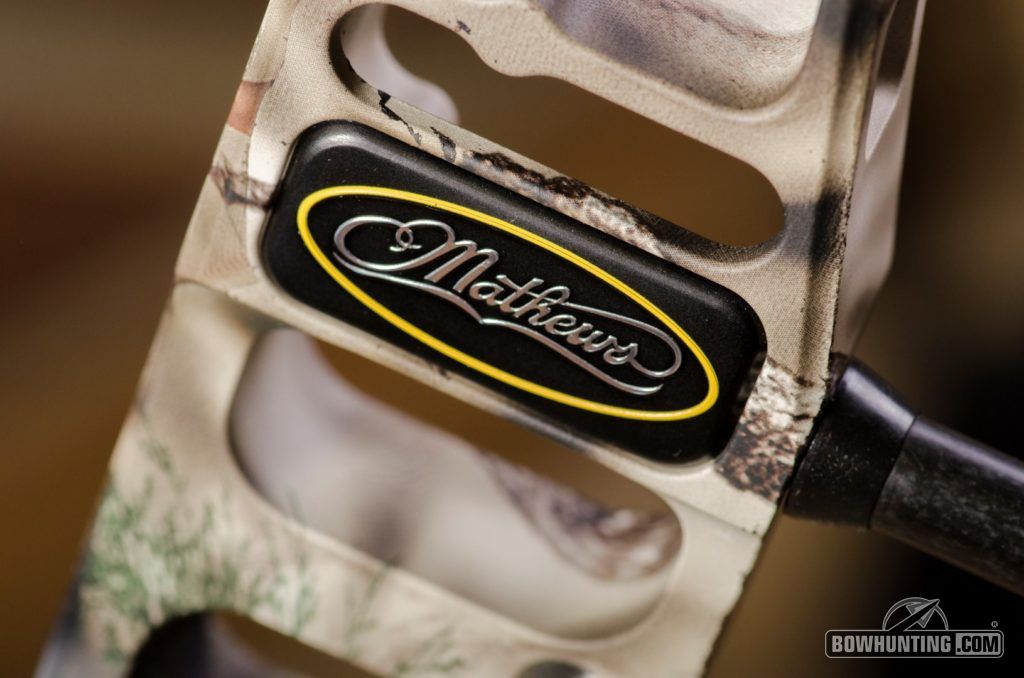
The Mathews logo is inlaid on the inside of the riser.
Although the Lost patterns do look great on the Halon I’m still a fan of the black and black tactical options. There’s just something about a well put together black bow that I really enjoy.
Mathews Halon Bow Review: Final Thoughts
When it comes to bows the choice on what feels best to each archer is a very personal decision. What feels great to me may not feel great to the next guy so there’s only so much stock you can put in one person’s opinion. However since you’ve read this far I’m going to give you mine.
Last November I fell in love with my NoCam HTR when I got it. I shot the daylights out of that bow and was very fortunate to harvest a spring turkey, a mule deer and 3 whitetails with it this year. For all intents and purposes it’s one of the finest bows I’ve ever had the pleasure to own and I fully intend on hanging onto it for some time to come. However having shot both the Halon and the HTR side by side I can unequivocally say I believe the Halon to be the superior bow. From the overall looks to the added speed and new grip the Halon simply feels like a machine that was put here to do one thing, and that’s kill animals without apology. God willing I plan to do just that with it.
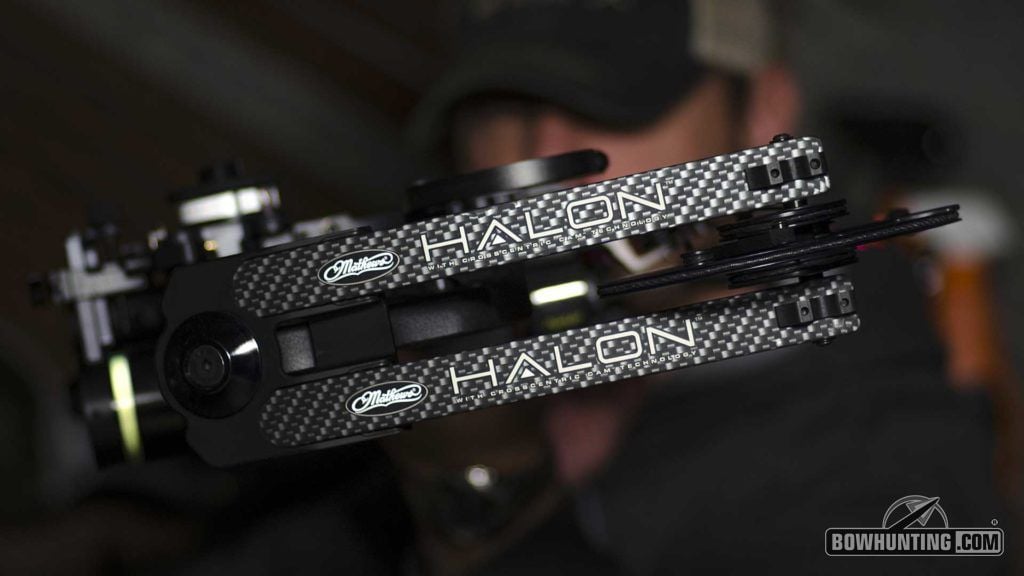
Mathews Halon in Black Tactical finish. Look out Illinois whitetails, I’m coming for you!
Of course I’m just one guy and that’s just my opinion. You’re certainly entitled to yours and I invite you to leave it in the comments below! Of course if you want to shoot one of these bows for yourself visit your local Mathews Retailer and give it a whirl.

 By
By 